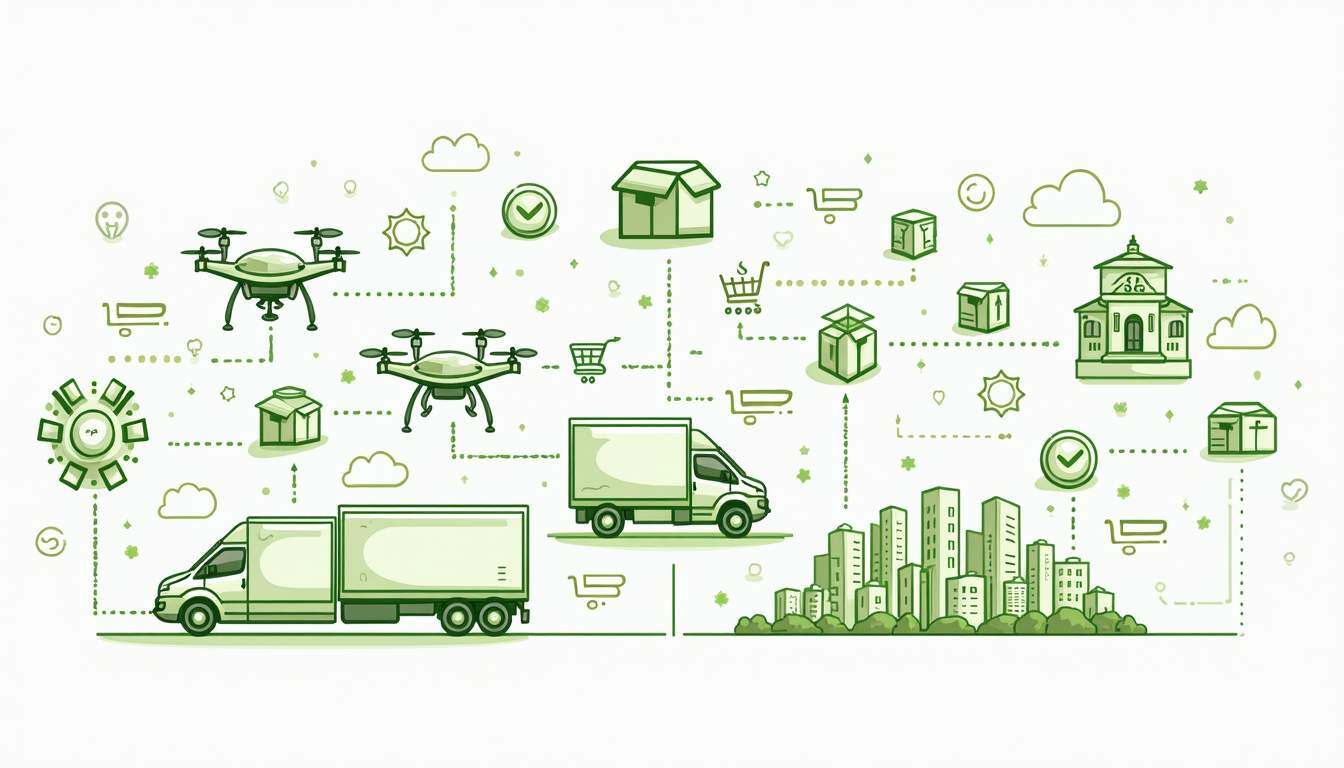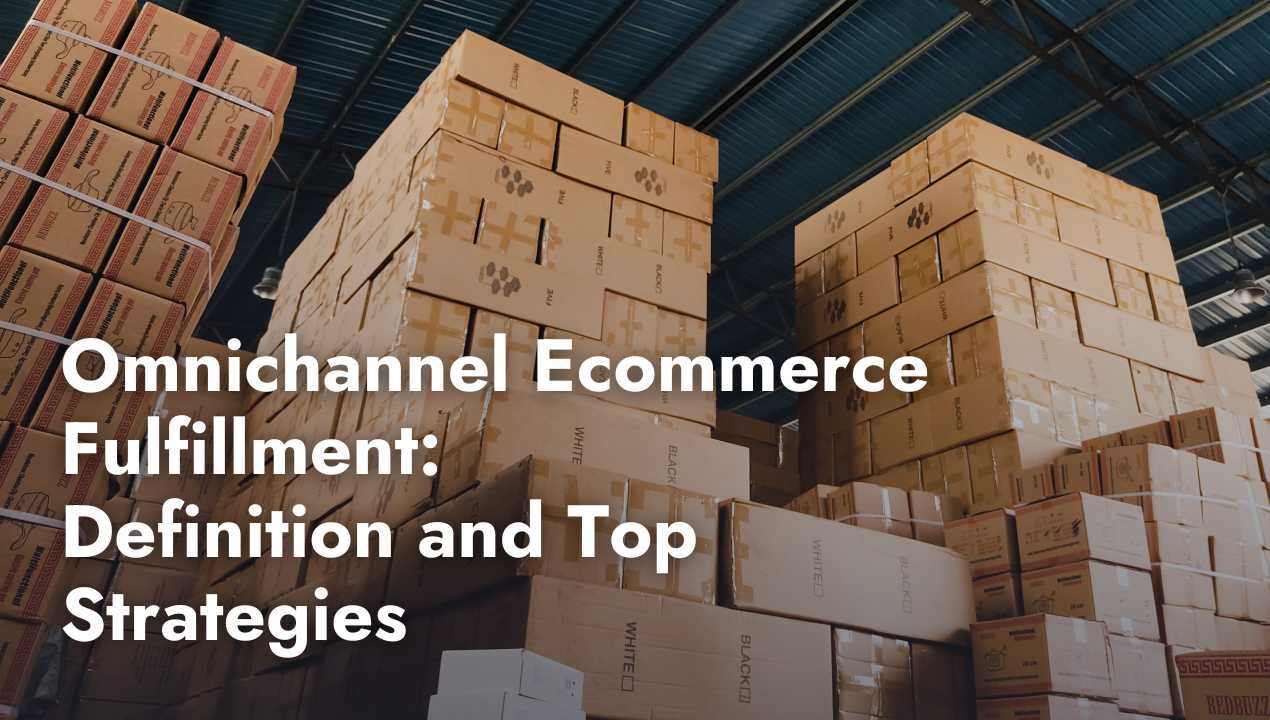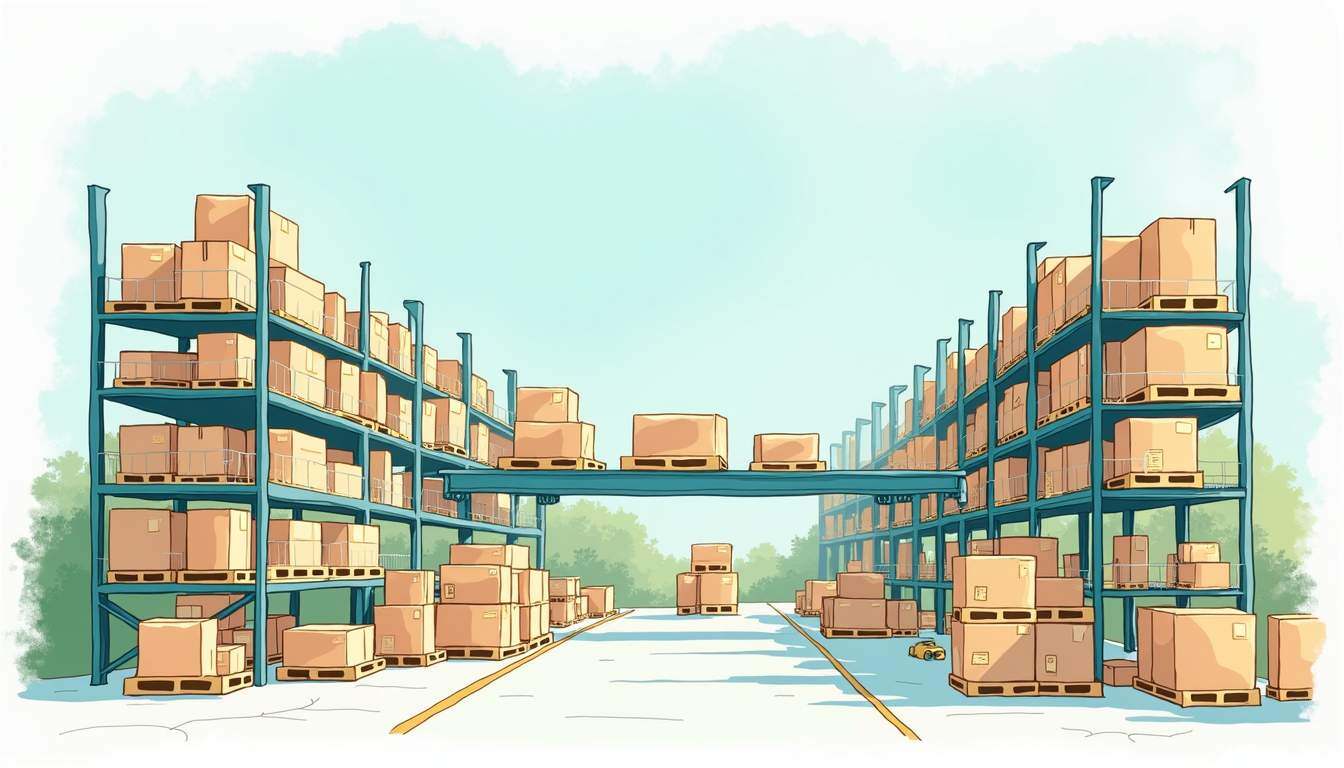Share this
How to Make Omnichannel Fulfillment Work for You
by Shipfusion Team on Mar. 27, 2025

The modern retail landscape is no longer confined to a single sales channel. Customers expect a seamless shopping experience across multiple touchpoints—whether browsing on social media, ordering via an ecommerce site, or picking up an item in-store. Omnichannel fulfillment bridges the gap between these channels, ensuring that businesses can deliver products efficiently, regardless of how or where customers choose to shop. Companies that integrate their inventory, order management, and fulfillment operations can reduce shipping costs, improve delivery times, and enhance the customer experience. This article explores the key strategies, challenges, and future trends shaping omnichannel fulfillment and how businesses can optimize their logistics for long-term success.
What Is Omnichannel Fulfillment?
Omnichannel fulfillment is the seamless integration of multiple sales channels—such as online stores, marketplaces, brick-and-mortar locations, and social commerce—into a unified fulfillment system. It ensures that customers can shop, purchase, and receive their orders through the channel of their choice without friction. This approach synchronizes inventory, order processing, and customer data across platforms, creating a cohesive experience that meets modern consumer expectations.
Why Omnichannel Fulfillment Matters
Today’s ecommerce landscape is driven by convenience and flexibility. Customers expect a shopping experience that allows them to browse a product on one platform, purchase it on another, and receive it through their preferred fulfillment method—whether that’s direct shipping, in-store pickup, or local delivery.
Businesses that fail to offer a seamless experience risk losing customers to competitors that do. For example, a shopper might discover a product through a social media ad, add it to their cart via a brand’s website, and finalize the purchase through a marketplace like Amazon. Omnichannel fulfillment ensures that inventory is correctly updated, orders are processed efficiently, and delivery is executed without delays, regardless of the touchpoint. This not only increases customer satisfaction but also boosts retention and revenue.
Core Components of a Successful Omnichannel Fulfillment Strategy
Executing an omnichannel fulfillment strategy requires robust infrastructure and strategic execution. Key components include:
1. Real-Time Inventory Management
A centralized inventory system is essential for omnichannel fulfillment. Businesses must have full visibility into stock levels across warehouses, retail locations, and fulfillment centers to prevent stockouts and overstocking. Advanced inventory management systems (IMS) use real-time data synchronization to ensure accurate stock allocation, reducing fulfillment errors and lost sales.
2. Integrated Order Management System (OMS)
An OMS consolidates order processing from multiple sales channels, automating fulfillment decisions based on inventory levels, customer location, and shipping preferences. It ensures that orders are routed to the nearest or most efficient fulfillment center, reducing shipping costs and delivery times.
3. Flexible Fulfillment Options
Customers expect multiple fulfillment choices, including:- Direct-to-consumer (DTC) shipping from warehouses or distribution centers.
- Buy Online, Pick Up In-Store (BOPIS) for immediate gratification and cost savings.
- Curbside pickup for contactless convenience.
- Same-day or next-day delivery for competitive speed.
Offering these options requires businesses to optimize their logistics network and streamline last-mile delivery.
4. Unified Customer Data and Personalization
A comprehensive view of customer interactions across all channels allows businesses to provide personalized experiences. By leveraging data from past purchases, browsing history, and engagement patterns, businesses can offer relevant product recommendations, loyalty rewards, and targeted promotions that drive conversions.
Strategies to Optimize Omnichannel Fulfillment
In action, the above approach can look like many different things. Here are a few examples of simple steps you can take to get started:
1. Invest In Scalable Technology
A robust tech stack is the foundation of omnichannel fulfillment. Businesses should integrate systems that enable seamless communication between inventory, order management, and shipping solutions. Cloud-based platforms with AI-driven analytics help retailers predict demand, automate replenishment, and optimize fulfillment workflows.
2. Implement a Distributed Fulfillment Network
Storing inventory across multiple strategically located warehouses reduces shipping distances, accelerates delivery times, and lowers costs. Many businesses are adopting micro-fulfillment centers (MFCs) in urban areas to handle last-mile logistics more efficiently.
3. Strengthen Supply Chain Collaboration
Strong relationships with suppliers, third-party logistics (3PL) providers, and shipping carriers are critical to maintaining fulfillment efficiency. Businesses should establish contingency plans for supply chain disruptions and diversify logistics partnerships to prevent bottlenecks.
4. Leverage Automation and AI
Automation in warehousing—such as robotic picking, automated sorting, and AI-driven order allocation—reduces manual errors and improves speed. AI-powered demand forecasting enables proactive inventory management, preventing stock imbalances.
Case-Specific Challenges In Omnichannel Fulfillment and How to Overcome Them
From inventory synchronization issues to last-mile delivery inefficiencies, each challenge requires a tailored solution. Below are some of the most common obstacles and case-specific ways to mitigate them.
1. High Operational Complexity and Costs
Managing multiple sales channels, inventory points, and fulfillment partners adds complexity and expenses. The logistics involved in processing orders from various sources, ensuring real-time inventory accuracy, and meeting customer expectations can be overwhelming.
Example
Problem: A growing apparel brand selling through its website, Amazon, and retail stores struggles with mismatched inventory across channels, leading to overselling.
Solution: Integrating a centralized inventory and order management system for real-time visibility and automated stock updates.
2. Inventory Visibility and Synchronization Issues
Without real-time synchronization, inventory discrepancies can lead to overselling, backorders, or lost sales. This problem is exacerbated when businesses use separate systems for each channel rather than a unified inventory solution.
Example
Problem: A home goods retailer with multiple warehouses and fulfillment centers finds that its online store frequently shows items in stock when they are actually out of stock in key distribution hubs.
Solution: Implementing an AI-powered inventory management platform to track stock levels dynamically and reallocate available inventory from the nearest location to meet demand efficiently.
3. Data Management and Security
Handling vast amounts of customer and order data across multiple touchpoints presents security risks. Data breaches, compliance issues, and inconsistent customer records can erode trust and lead to legal complications.
Example
Problem: A direct-to-consumer electronics brand faces security vulnerabilities when customer information was fragmented across different sales channels.
Solution: Migrating to a cloud-based CRM with encrypted customer data storage to improve security while also providing personalized experiences through better customer insights.
4. Last-Mile Delivery Challenges
Meeting consumer expectations for fast and affordable delivery requires efficient last-mile logistics. Delays, high costs, and unreliable carriers can negatively impact customer satisfaction.
Example
Problem: A food and beverage ecommerce store struggles with inconsistent delivery times, especially in rural areas where carrier coverage is limited.
Solution: Partnering with local courier services and implementing an automated route optimization system to reduce delivery time variability.
Future Trends In Omnichannel Fulfillment
As technology and consumer behavior evolve, businesses must stay ahead of emerging trends to maintain a competitive edge.
1. AI and Predictive Analytics
AI-driven forecasting models enable businesses to anticipate demand, adjust inventory allocation, and personalize customer interactions. Machine learning algorithms can analyze shopping patterns and recommend the best fulfillment strategies based on past behavior.
2. Robotics and Warehouse Automation
Robotic process automation (RPA) and autonomous mobile robots (AMRs) are revolutionizing warehouse operations. These technologies improve efficiency in picking, packing, and sorting, reducing fulfillment times and costs.
3. Sustainable Fulfillment Initiatives
Consumers increasingly prioritize sustainability. Businesses are adopting eco-friendly packaging, carbon-neutral shipping options, and optimized route planning to reduce their environmental footprint. Some brands are implementing circular logistics models, including reusable packaging and reverse logistics for returns.
4. Expansion of Same-Day and Hyperlocal Delivery
As consumers expect faster fulfillment, businesses are investing in hyperlocal delivery networks using local fulfillment centers and gig-economy couriers to provide near-instant deliveries.
Shipfusion Gets Omnichannel Fulfillment Done Right
Omnichannel fulfillment isn’t just about meeting customer expectations—it’s about exceeding them. Businesses that invest in real-time inventory tracking, integrated order management, and flexible fulfillment options will position themselves for sustained growth. Shipfusion’s commitment to efficiency and accuracy ensures your customers enjoy a seamless shopping experience, while you enjoy peace of mind.
Discover how we can help you achieve ecommerce success and request a free quote today.
Share this
You May Also Like
These Related Articles

Omnichannel Ecommerce Fulfillment: Definition and Top Strategies

Just How Extensive Can Fulfillment Warehouse Services Get?

What Is Ecommerce Fulfillment?
- March 2025 (26)
- February 2025 (26)
- January 2025 (37)
- December 2024 (16)
- November 2024 (23)
- October 2024 (22)
- September 2024 (27)
- August 2024 (9)
- July 2024 (8)
- June 2024 (5)
- May 2024 (8)
- April 2024 (8)
- March 2024 (6)
- February 2024 (6)
- January 2024 (5)
- December 2023 (3)
- November 2023 (3)
- October 2023 (5)
- September 2023 (4)
- August 2023 (2)
- July 2023 (1)
- June 2023 (4)
- March 2023 (2)
- October 2022 (1)
- September 2022 (5)
- August 2022 (4)
- July 2022 (7)
- June 2022 (4)
- May 2022 (4)
- April 2022 (6)
- March 2022 (2)
- February 2022 (1)
- January 2022 (3)
- December 2021 (2)
- November 2021 (4)
- October 2021 (2)
- September 2021 (5)
- August 2021 (4)
- July 2021 (5)
- June 2021 (3)
- May 2021 (2)
- April 2021 (3)
- March 2021 (3)
- February 2021 (3)
- January 2021 (2)
- December 2020 (4)
- November 2020 (2)
- October 2020 (4)
- September 2020 (2)
- July 2020 (5)
- June 2020 (4)
- May 2020 (2)
- April 2020 (2)
- March 2020 (4)
- February 2020 (1)
- December 2019 (1)
- May 2018 (1)
- March 2018 (2)
- February 2018 (3)
- January 2018 (3)
- November 2017 (3)
- July 2017 (4)
- March 2017 (3)
- February 2017 (5)
- January 2017 (3)
- December 2016 (4)
- November 2016 (6)
- October 2016 (6)
- October 2015 (1)
- September 2015 (1)
- June 2015 (3)
- May 2015 (3)
- August 2014 (1)
- July 2014 (1)
- March 2014 (1)
- February 2014 (1)